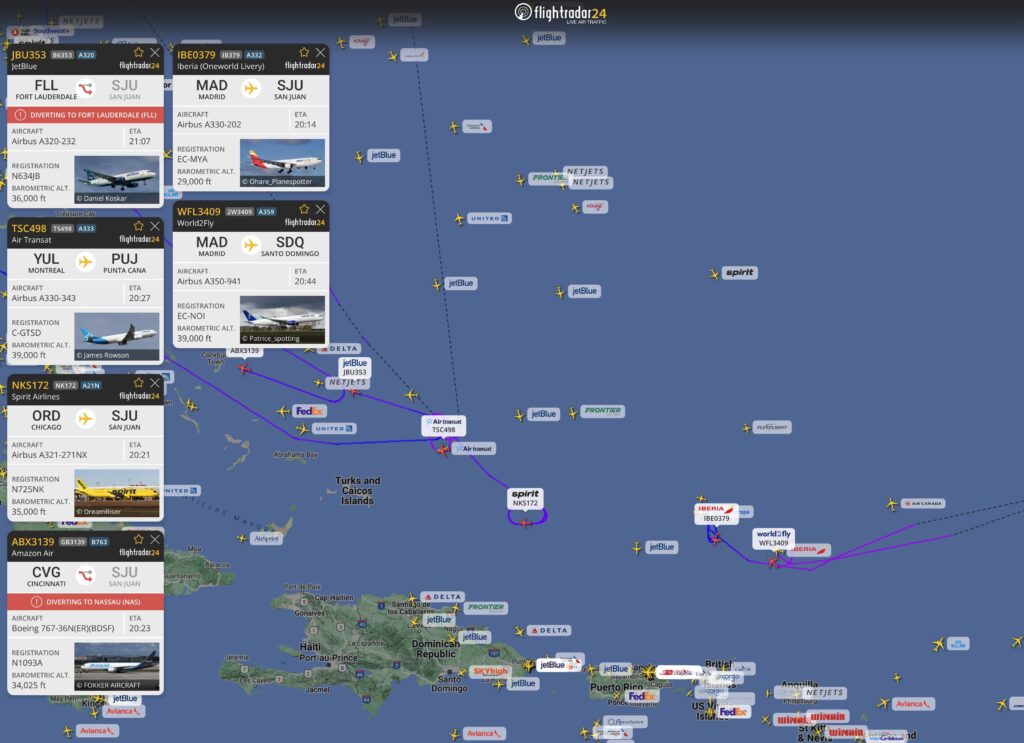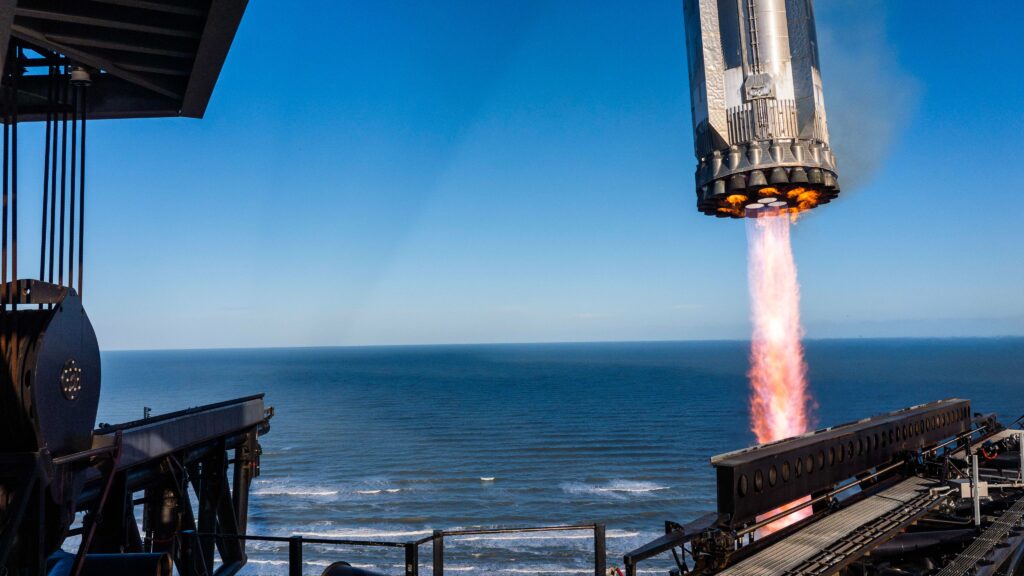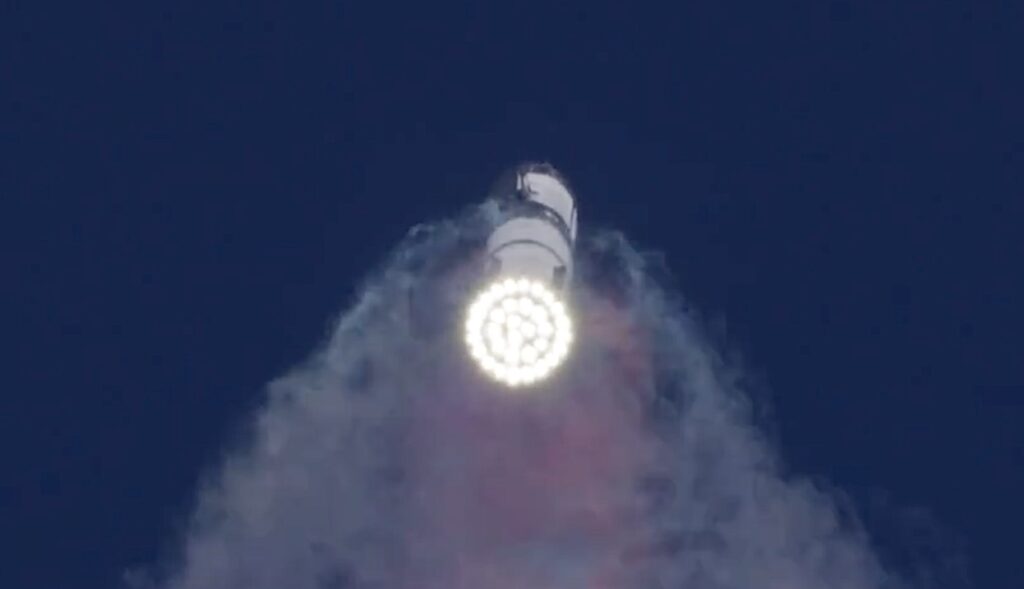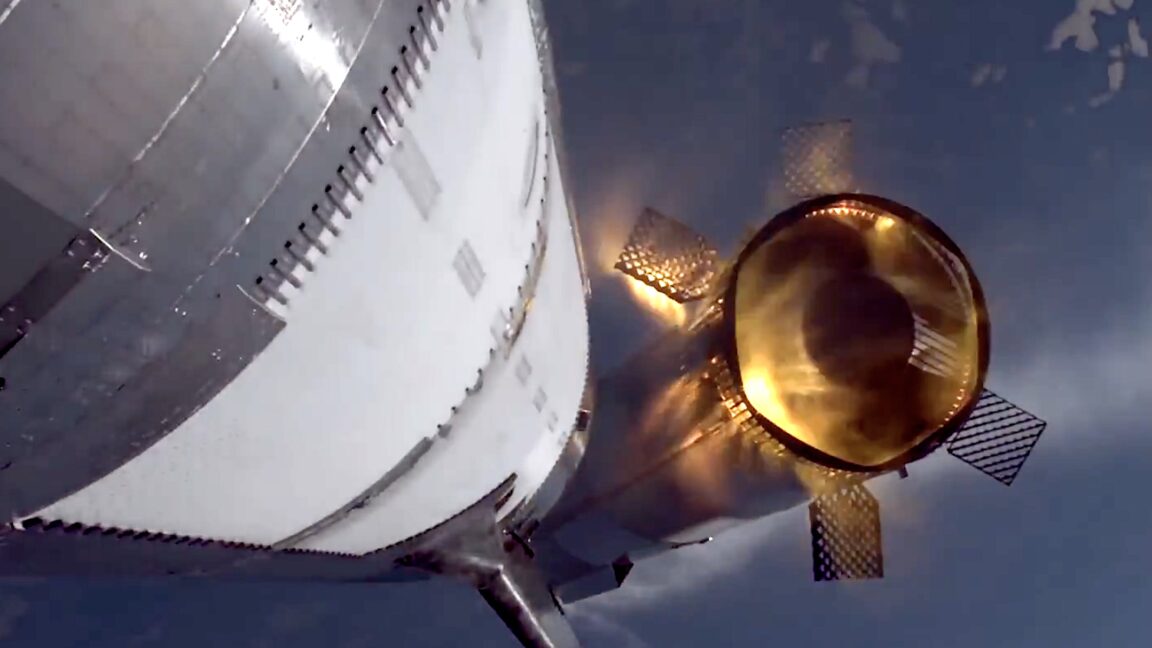The Federal Aviation Administration will likely require an investigation into the accident.
SpaceX launched an upgraded version of its massive Starship rocket from South Texas on Thursday, but the flight ended less than nine minutes later after engineers lost contact with the spacecraft.
For a few moments, SpaceX officials discussing the launch on the company's live webcast were unsure of the outcome of the test flight. However, within minutes, residents and tourists in the Turks and Caicos Islands, Haiti, the Dominican Republic, and Puerto Rico shared videos showing a shower of debris falling through the atmosphere along Starship's expected flight corridor.
The videos confirmed Starship—the rocket's upper stage—broke apart in space, or experienced a "rapid unscheduled disassembly" in SpaceX-speak. This happened well short of the spacecraft's planned trajectory, which would have seen it fly halfway around the world and splash down in the Indian Ocean after more than an hour of flight.
There were no people or satellites aboard the rocket Thursday.
Flight diversions
The test flight began with the liftoff of the 404-foot-tall (123.1-meter) Super Heavy booster and Starship upper stage from the Texas Gulf Coast at 4:37 pm CST (5:37 pm EST; 22:37 UTC). The world's largest and most powerful launcher climbed off the launch pad with more than twice the thrust of NASA's Apollo-era Saturn V rocket. Heading east, its 33 methane-fueled Raptor booster engines fired for more than two and a half minutes to propel Starship toward the edge of space.
The booster's engines shut down as planned, followed moments later by the ignition of six Raptor engines on the Starship upper stage. The Super Heavy booster separated from the rocket to fly itself back to the launch site. Just shy of seven minutes after liftoff, the booster returned to the launch pad for a mid-air catch by the tower's two mechanical arms, repeating a feat SpaceX accomplished in October.
The upper stage, meanwhile, appeared to fly normally until a telemetry display on SpaceX's webcast indicated that one of the ship's six engines shut off more than seven minutes after liftoff. The display then showed more engines failing, and the data stream froze.
In an update posted on SpaceX's website later Thursday evening, officials said ground teams lost contact with the spacecraft approximately eight and a half minutes into the flight. At the time, information on SpaceX's live video stream showed the vehicle was traveling at about 13,246 mph (21,317 km/hr) at an altitude of about 91 miles (146 kilometers).
"Initial data indicates a fire developed in the aft section of the ship, leading to a rapid unscheduled disassembly with debris falling into the Atlantic Ocean within the predefined hazard areas," SpaceX officials wrote in the update.
The falling debris caused air traffic controllers to divert or reroute commercial flights over the Caribbean and the Atlantic Ocean, according to the Federal Aviation Administration.

Air traffic controllers have the ability to activate a "Debris Response Area" if a spacecraft experiences an anomaly with debris falling outside of identified closed aircraft hazard areas, where the FAA notifies pilots in advance about the risk of reentering space junk. Activating a Debris Response Area "allows the FAA to direct aircraft to exit the area and prevent others from entering," the statement read.
This is what the FAA did Thursday evening. Air traffic controllers closed a swath of airspace between the Turks and Caicos Islands, the Dominican Republic, and Puerto Rico to commercial air traffic for more than an hour, causing some passenger airline flights to enter a holding pattern, return to their departure airports, land at alternate airfields, or delay their takeoffs.
Flight-tracking sites and apps showed the extent of the impacts on air traffic. Miami International Airport and Fort Lauderdale International Airport, both hubs for flights to and from the Caribbean, reported short flight delays due to a "rocket launch anomaly," according to an FAA website.
Ars listened to live audio from air traffic control in San Juan, Puerto Rico, as controllers alerted pilots of the airspace restrictions.
"How long do you think this hold is going to be? We don't have a lot of gas to play with," one pilot asked air traffic control. "The sooner we can get on the ground, the better."
A short time later, the airspace reopened, and flights continued on to their destinations or diverted to other airports.
“That’s the coolest sh*t I’ve ever seen in my life”
Some of the videos recorded by residents and tourists in the Turks and Caicos appeared to show fiery debris fragments streaking almost directly overhead. Many people speaking in the videos did not realize what they were seeing, but space enthusiasts on social media quickly identified the source of the spectacle.
Elon Musk, SpaceX's founder and CEO, wrote on X that early signs from data suggested there was a propellant leak in a cavity above Starship's engine firewall. The leak was large enough to build pressure in excess of the ship's vent capacity.
"Apart from obviously double-checking for leaks, we will add fire suppression to that volume and probably increase vent area," Musk wrote. "Nothing so far suggests pushing next launch past next month."
Coming into 2025, SpaceX officials hoped to launch as many as 25 Starship test flights this year to experiment with new designs, attempt a recovery of Starship from orbit, and demonstrate orbital refueling, a capability that is critical to NASA and SpaceX's plans to land astronauts on the Moon later this decade.
SpaceX designed Starship to be fully reusable, with the ability to deliver more than 100 metric tons (220,000 pounds) of cargo to low-Earth orbit. Future versions of the ship will be suited for travel to the Moon and Mars. NASA has two contracts for SpaceX to develop a derivative of Starship as a human-rated lander for the agency's Artemis lunar program, and Musk views Starship as central to enabling his vision of creating a human settlement on the red planet.
NASA's official public schedule calls for a crew landing at the Moon's south pole in 2027, using the privately developed Starship alongside the agency's government-managed Space Launch System rocket and Orion crew capsule. Together, the vehicles will transport astronauts from Earth to the Moon, then to the lunar surface and back into space, and finally back to Earth.
However, this schedule hinges on the readiness of Starship to accommodate humans, the availability of new lunar spacesuits, and the status of the SLS rocket and Orion spacecraft, both of which have endured lengthy delays. The incoming Trump administration is expected to reevaluate the architecture of the Artemis program to determine if, and how, NASA can return humans to the Moon faster and cheaper. It's possible SpaceX's Starship and other commercial rockets might carve out a more significant role.

If SpaceX can fly Starship again as soon as next month, it's possible the company could preserve its aims for the program this year. SpaceX has no shortage of hardware ready or nearly ready to go. There are multiple Starships and Super Heavy boosters undergoing preparations for future test flights at the company's Starbase launch facility near Brownsville, Texas.
But schedules often slip in the launch business, and the FAA could ground Starship until SpaceX completes a formal mishap investigation. The federal regulator is responsible for ensuring public safety on commercial space launches. A spokesperson told Ars late Thursday that the FAA is assessing the Starship anomaly and will provide a statement when officials know more.
A setback, sure, but is this a big deal?
In the hours after Thursday's test flight, Musk took to his social media platform to share and comment on several videos of the Starship debris coming back to Earth. SpaceX has long embraced failures as learning opportunities, and the company's culture is centered on rapidly iterating on designs—build, test, break, fix.
This launch debuted a more advanced, slightly taller version of Starship, known as Version 2 or Block 2, with larger propellant tanks, a new avionics system, and redesigned feed lines flowing methane and liquid oxygen propellants to the ship's six Raptor engines. SpaceX officials did not say whether any of these changes might have caused the problem on Thursday's launch.
SpaceX officials have repeatedly and carefully set expectations for each Starship test flight. They routinely refer to the rocket as experimental, and the primary focus of the rocket's early demo missions is to gather data on the performance of the vehicle. What works, and what doesn't work?
Still, the outcome of Thursday's test flight is a clear disappointment for SpaceX. This was the seventh test flight of SpaceX's enormous rocket and the first time Starship failed to complete its launch sequence since the second flight in November 2023. Until now, SpaceX has made steady progress, and each Starship flight has achieved more milestones than the one before.
On the first flight in April 2023, the rocket lost control a little more than two minutes after liftoff, and the ground-shaking power of the booster's 33 engines shattered the concrete foundation beneath the launch pad. Seven months later, on Flight 2, the rocket made it eight minutes before failing. On that mission, Starship failed at roughly the same point of its ascent, just before the cutoff of the vehicle's six methane-fueled Raptor engines.
Back then, a handful of photos and images from the Florida Keys and Puerto Rico showed debris in the sky after Starship activated its self-destruct mechanism due to an onboard fire caused by a dump of liquid oxygen propellant. But that flight occurred in the morning, with bright sunlight along the ship's flight path.
This time, the ship disintegrated and reentered the atmosphere at dusk, with impeccable lighting conditions accentuating the debris cloud's appearance. These twilight conditions likely contributed to the plethora of videos posted to social media on Thursday.

The third Starship test flight last March saw the spacecraft reach its planned trajectory and fly halfway around the world before succumbing to the scorching heat of atmospheric reentry. In June, the fourth test flight ended with controlled splashdowns of the rocket's Super Heavy booster in the Gulf of Mexico and of Starship in the Indian Ocean.
In October, SpaceX caught the Super Heavy booster with mechanical arms at the launch pad for the first time, proving out the company's audacious approach to recovering and reusing the rocket. On this fifth test flight, SpaceX modified the ship's heat shield to better handle the hot temperatures of reentry, and the vehicle again made it to an on-target splashdown in the Indian Ocean.
Most recently, Flight 6 on November 19 demonstrated the ship's ability to reignite its Raptor engines in space for the first time and again concluded with a bullseye splashdown. But SpaceX aborted an attempt to again catch the booster back at Starbase due to a problem with sensors on the launch pad's tower.
With Flight 7, SpaceX hoped to test more changes to the heat shield protecting Starship from reentry temperatures up to 2,600° Fahrenheit (1,430° Celsius). Musk has identified the heat shield as one of the most difficult challenges still facing the program. In order for SpaceX to reach its ambition for the ship to become rapidly reusable, with minimal or no refurbishment between flights, the heat shield must be resilient and durable.
While the three previous Starship test flights each softly splashed down at sea, onboard camera views showed some of the ship's heat-absorbing ceramic tiles stripping away from the vehicle during reentry. Other changes on Flight 7 included a new tapered edge to the line where the tiles meet the ship's stainless steel skin and multiple metallic tile options, including one with active cooling, to test alternative heat shield materials.
SpaceX also wanted to test the thermal performance of new fittings that will be used to catch Starship back at the launch tower on future flights. Engineers were eager to see how redesigned flaps near the nose of Starship worked during its descent back to Earth. And once the ship reached space, SpaceX intended to release 10 mock-ups of next-generation Starlink Internet satellites to test the ship's payload deployment mechanism for the first time.
All those objectives will now have to wait until Flight 8. Going into this launch, Musk hoped to attempt to catch the Starship upper stage, similar to the way SpaceX recovered the Super Heavy booster, as soon as the next test flight. Now, that will likely have to wait until a later mission.
"As always, success comes from what we learn, and this flight test will help us improve Starship’s reliability as SpaceX seeks to make life multiplanetary," SpaceX said. "Data review is already underway as we seek out root cause. We will conduct a thorough investigation, in coordination with the FAA, and implement corrective actions to make improvements on future Starship flight tests."
Hope you enjoyed this news post.
Thank you for appreciating my time and effort posting news every day for many years.
News posts... 2023: 5,800+ | 2024: 5,700+
RIP Matrix | Farewell my friend ![]()



3175x175(CURRENT).thumb.jpg.b05acc060982b36f5891ba728e6d953c.jpg)
Recommended Comments
There are no comments to display.
Join the conversation
You can post now and register later. If you have an account, sign in now to post with your account.
Note: Your post will require moderator approval before it will be visible.